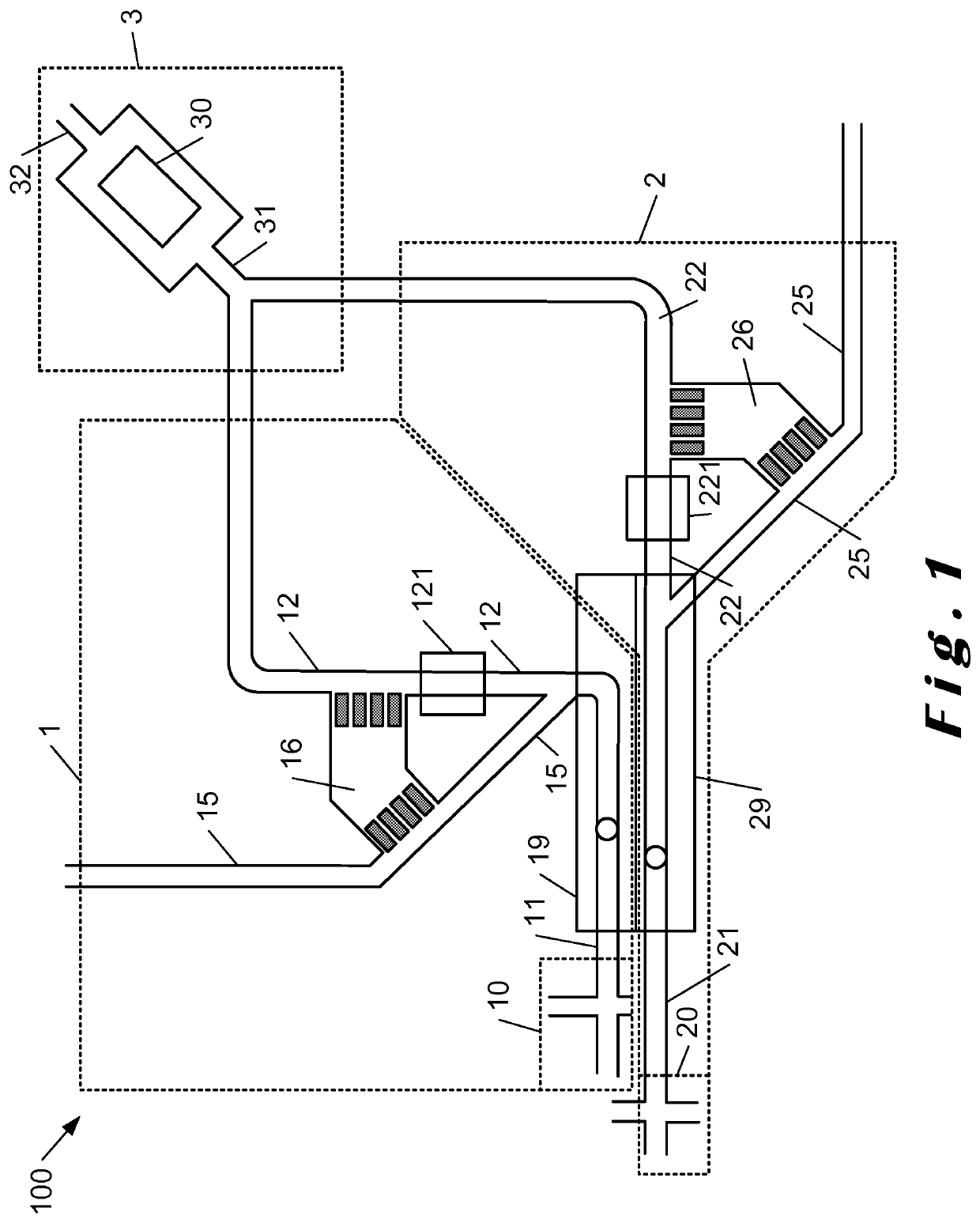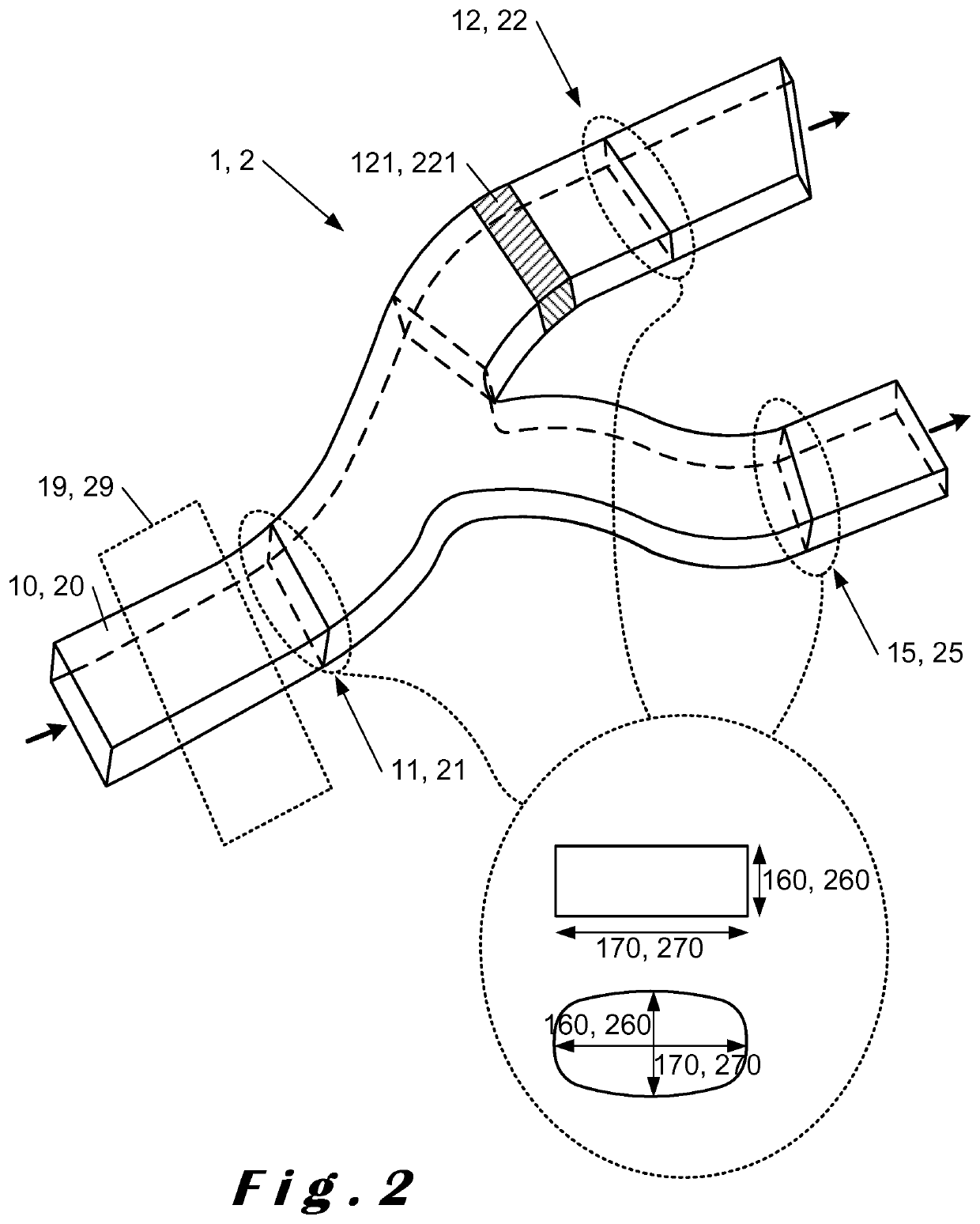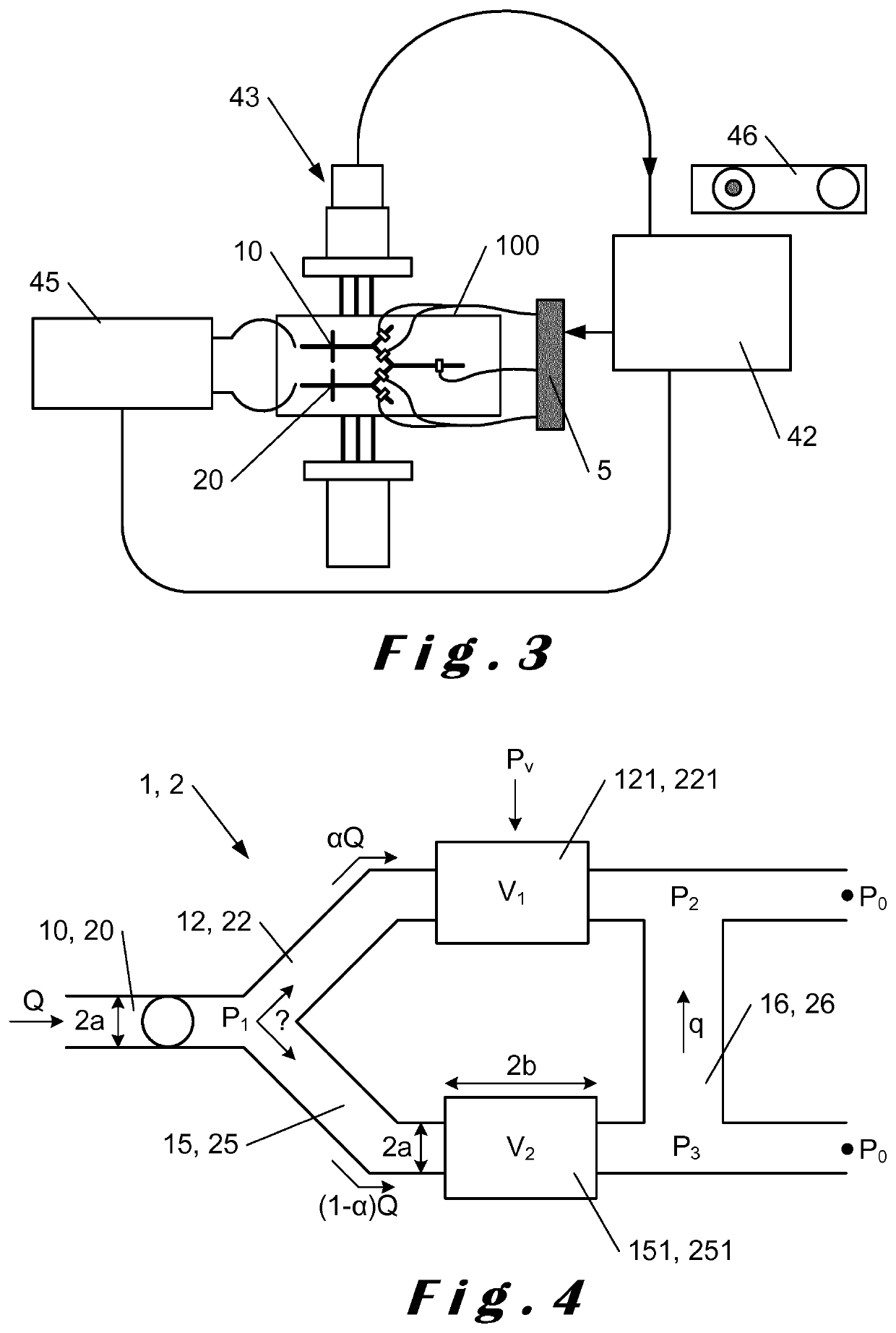Microfluidic module for co-encapsulation in droplets
a technology of microfluidic modules and droplets, which is applied in the field of microfluidic modules for co-encapsulation in droplets, can solve the problems of inability to control the content of merged droplets, the size of droplets must be related, and the inability to validate all manipulations, etc., to avoid the merging of droplets, high yield, and high throughput
- Summary
- Abstract
- Description
- Claims
- Application Information
AI Technical Summary
Benefits of technology
Problems solved by technology
Method used
Image
Examples
Embodiment Construction
lass="d_n">[0133]FIG. 1 shows a schematic diagram of an embodiment of the microfluidic module 100 of the invention. The microfluidic device 100 comprises a first module 1, for generating, encapsulating, sorting and providing to the fusion module 3 a droplet of a first population to be merged with another droplet in the fusion module 3. The microfluidic device 100 comprises a second module 2, for generating, encapsulating, sorting and providing to the fusion module 3 a droplet of a second population to merge with another droplet in the fusion module 3. The first 1 and second 2 modules each comprise a generation and encapsulation module 10, 20 able to provide in respective inlets 11, 21, encapsulated droplets of a first and second population respectively. The first 1 and second 2 module inlets 11, 21 respectively each have a detection portion 19, 29 which allows visualizing generated and encapsulated droplets in these inlets 11, 21. The visualization through these detection portions 1...
PUM
| Property | Measurement | Unit |
|---|---|---|
| diameters | aaaaa | aaaaa |
| diameters | aaaaa | aaaaa |
| outer diameters | aaaaa | aaaaa |
Abstract
Description
Claims
Application Information
 Login to View More
Login to View More - R&D
- Intellectual Property
- Life Sciences
- Materials
- Tech Scout
- Unparalleled Data Quality
- Higher Quality Content
- 60% Fewer Hallucinations
Browse by: Latest US Patents, China's latest patents, Technical Efficacy Thesaurus, Application Domain, Technology Topic, Popular Technical Reports.
© 2025 PatSnap. All rights reserved.Legal|Privacy policy|Modern Slavery Act Transparency Statement|Sitemap|About US| Contact US: help@patsnap.com



